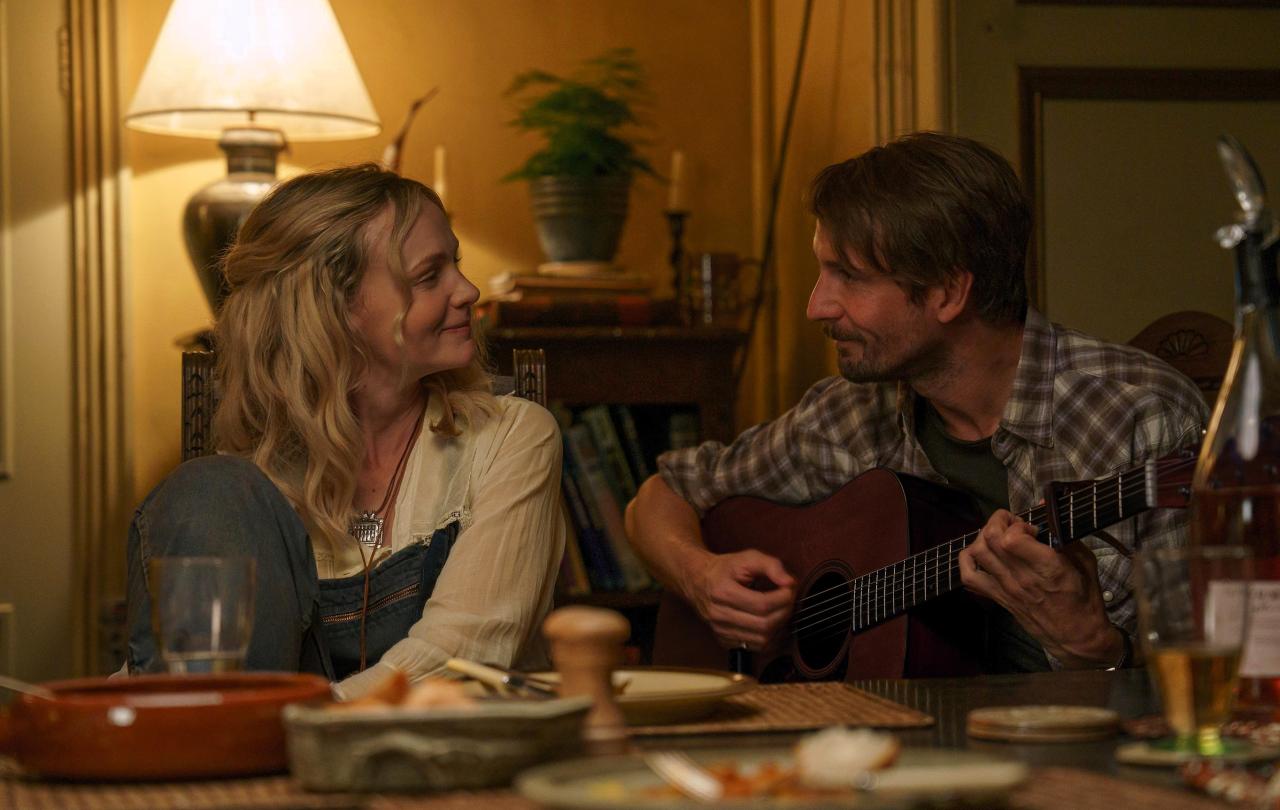
A few weeks ago, a good friend of mine told me I needed to see The Ballad of Wallis Island.
He said I’d like it. In fact, my friend went so far as to say he thought it would be one of my favourite ever films.
And now, having gone to see the new comedy-drama, I can confirm that he was right.
But just what was it about this film - quite short by modern standards at 1 hour 40 - that marked it out as one I would so obviously enjoy?
I was considering this as I sat through it, and as my guffaws eventually gave way to tears, I had my answer.
For when it comes to films - or anything in life, really - it’s those with deeper meaning that most enthrall me.
And James Griffiths’ new film certainly has this in spades - it’s a “ballad”, after all - as well as a good dose of humour, epitomised by the inimitable Tim Key, whom some of you may know from the 2022 sitcom Witchfinder.
As someone who grew up on the painfully awkward comedy of Ricky Gervais’ The Office, Key’s character, Charles, the bumbling super-fan of a folk duo, is a perfect blend of the endearing and the ridiculous.
From the moment “the great Herb McGwyer” (played by Tom Basden) arrives on Wallis Island to be met by a host who swiftly sends him head over heels into the sea, the stage is set for the relationship that will dominate the narrative.
Devotee and artist, wealthy loner and lonely superstar provide the perfect juxtaposition, whose success is no doubt aided by the fact that both lead actors were also co-writers.
One suspects the film’s success may also have something to do with the time it spent in development, having first been produced nearly two decades ago as a BAFTA-nominated comedy short, titled The One and Only Herb McGwyer Plays Wallis Island.
But having now watched both 2025 film and 2007 short, which is available to watch online, the feature-length version is, to my mind, by far the better of the two.
And while some of the jokes from the original remain, such as the manner of Herb’s comical arrival and eventual departure - though I won’t spoil the latter for you - there are some notable improvements.
Chief among them, in my eyes, are the three female characters incorporated into the film: Carey Mulligan, who plays the second half of the McGwyer-Mortimer duo; Charles’ unseen former partner, Marie; and his new love interest, in the form of Wallis Island’s solitary shop-owner, Amanda (Sian Clifford).
It’s funny to think that my friend pitched the film to me as a “Rom-com”, given that in the original concept there was not even a single female character, let alone any romance. Yet from this viewer’s perspective at least, it is the addition of the three women (including the unseen Marie) that make the film.
Indeed, this major tweak to the plotline was the very element that ultimately brought tears to my eyes, as I considered the relational loss and loneliness that provide the common ground between the otherwise worlds-apart super-fan and idol.
I saw the same look in this woman’s eyes as I had seen in Charles’s as he watched his hero play the song that was his former partner’s favourite.
I was also forced to reflect upon the certain similarity I seem to share with the blundering Charles, having once lived two doors down from the real Carey Mulligan and, during our sole face-to-face encounter, chose the moment to express my great admiration for the music of her husband, Marcus Mumford, before awkwardly and very swiftly beating my retreat.
I am embarrassed to admit that I even later posted a copy of one of my books into the Mumford letterbox - possibly that very same day - in the hope that it might engender the start of a beautiful friendship.
Alas, I never heard from them again.
A similar motivation is clearly the driving force behind Charles’ invitation of his two idols to his home, which is filled with their memorabilia, as the audience is encouraged to consider how they may feel if given the opportunity to host their own heroes.
“Never meet your heroes,” Charles quips in the original short, but in the film the relationships are allowed to reach greater depths and, in spite of some initial suggestions that Charles’ affections may be bordering on stalker-like, it soon becomes clear that there is nothing sinister about this loveable simpleton.
The rave reviews the film has received, years after the idea was first hatched, are also surely an encouragement to any of us who may have long held a dream but never seen it come to pass.
The message of The Ballad of Wallis Island, I believe, is that we should hold onto such dreams and cling tightly to the things that matter most.
Before sitting down to write this article, I was walking through a local park when I passed a young woman who was sitting on the grass, crying, and I approached her to ask if she was all right.
It transpired that the woman’s partner had died a year before and that she liked to come back to the tree under which she was sitting to remember him, as it was a special place for them.
I saw the same look in this woman’s eyes as I had seen in Charles’s as he watched his hero play the song that was his former partner’s favourite.
"Cling to the things that matter most,” the woman told me, as we parted ways. And that’s certainly the message that both film and chance encounter have impressed upon me.
Support Seen & Unseen
Since Spring 2023, our readers have enjoyed over 1,500 articles. All for free.
This is made possible through the generosity of our amazing community of supporters.
If you enjoy Seen & Unseen, would you consider making a gift towards our work?
Do so by joining Behind The Seen. Alongside other benefits, you’ll receive an extra fortnightly email from me sharing my reading and reflections on the ideas that are shaping our times.
Graham Tomlin
Editor-in-Chief





